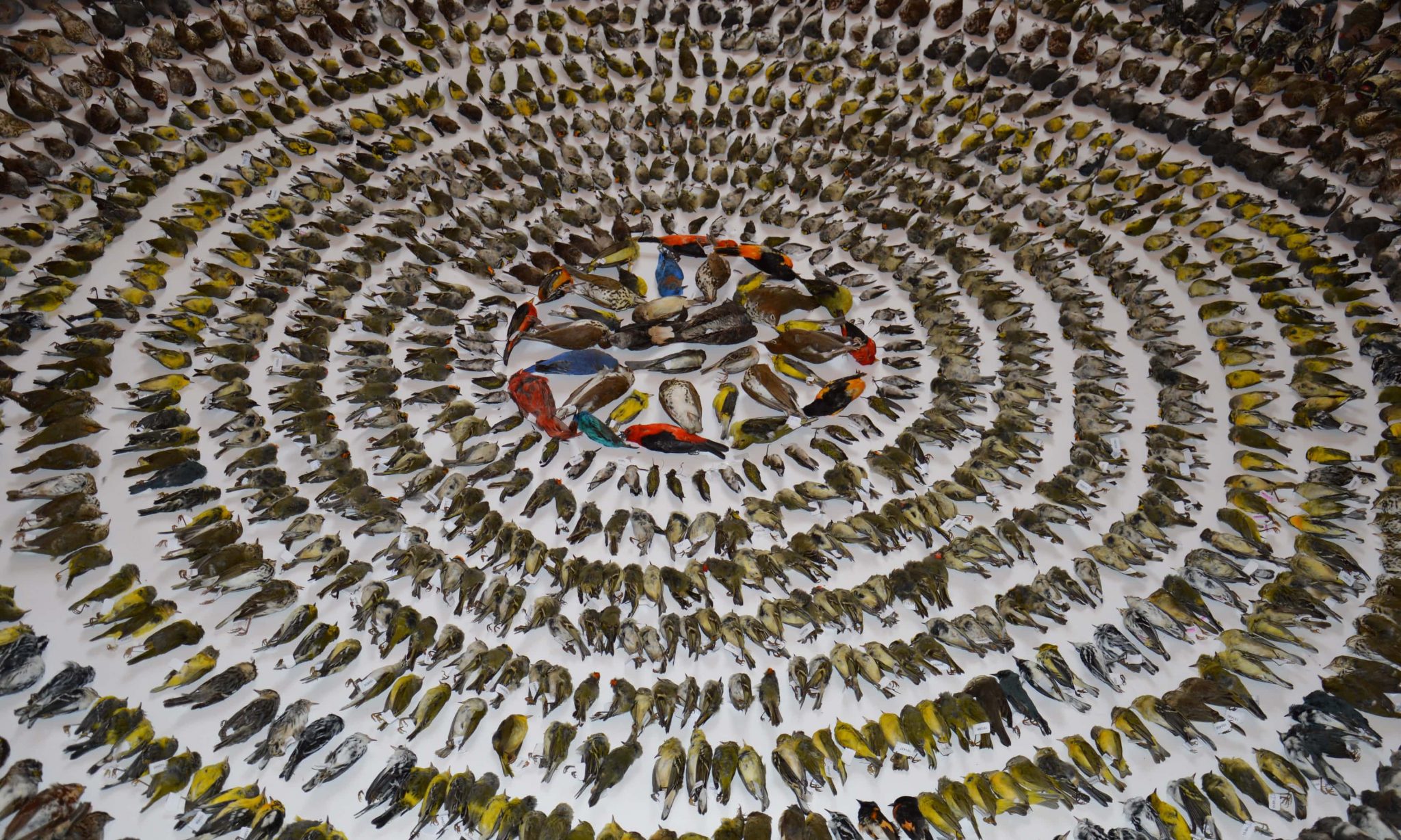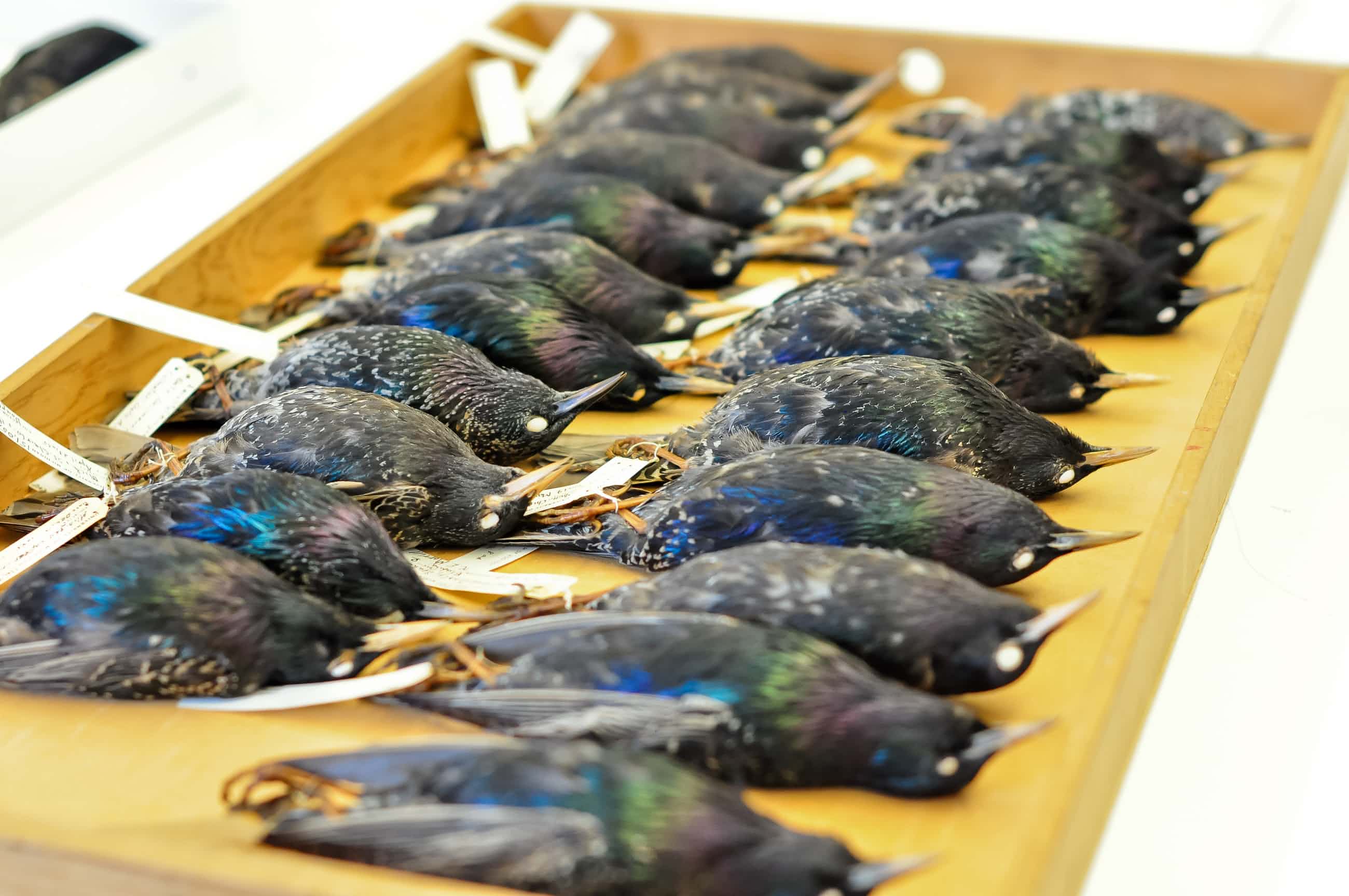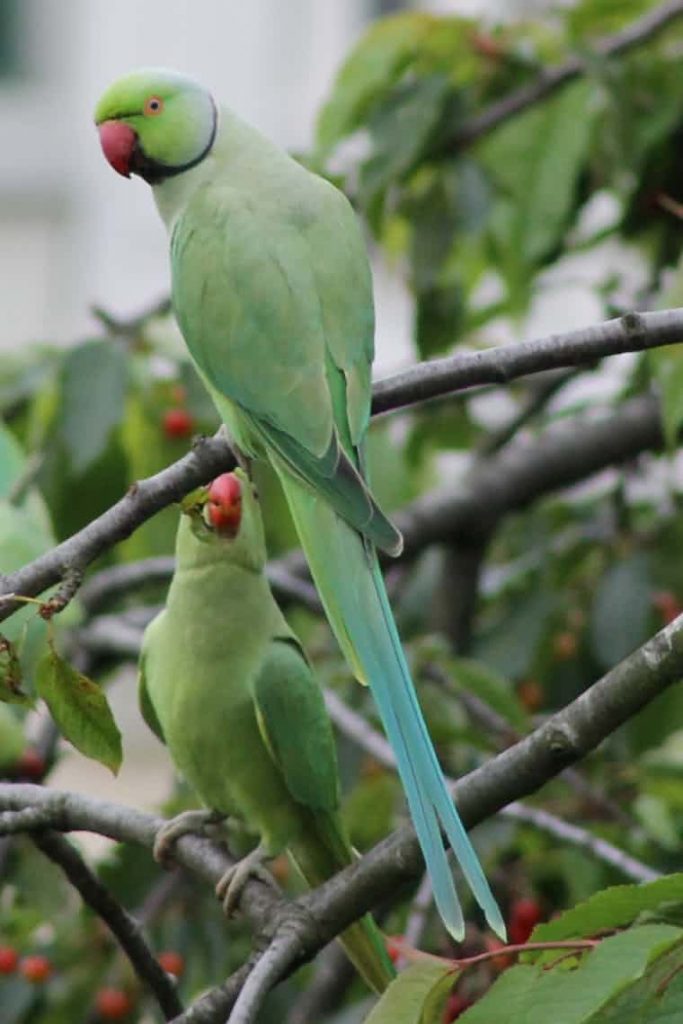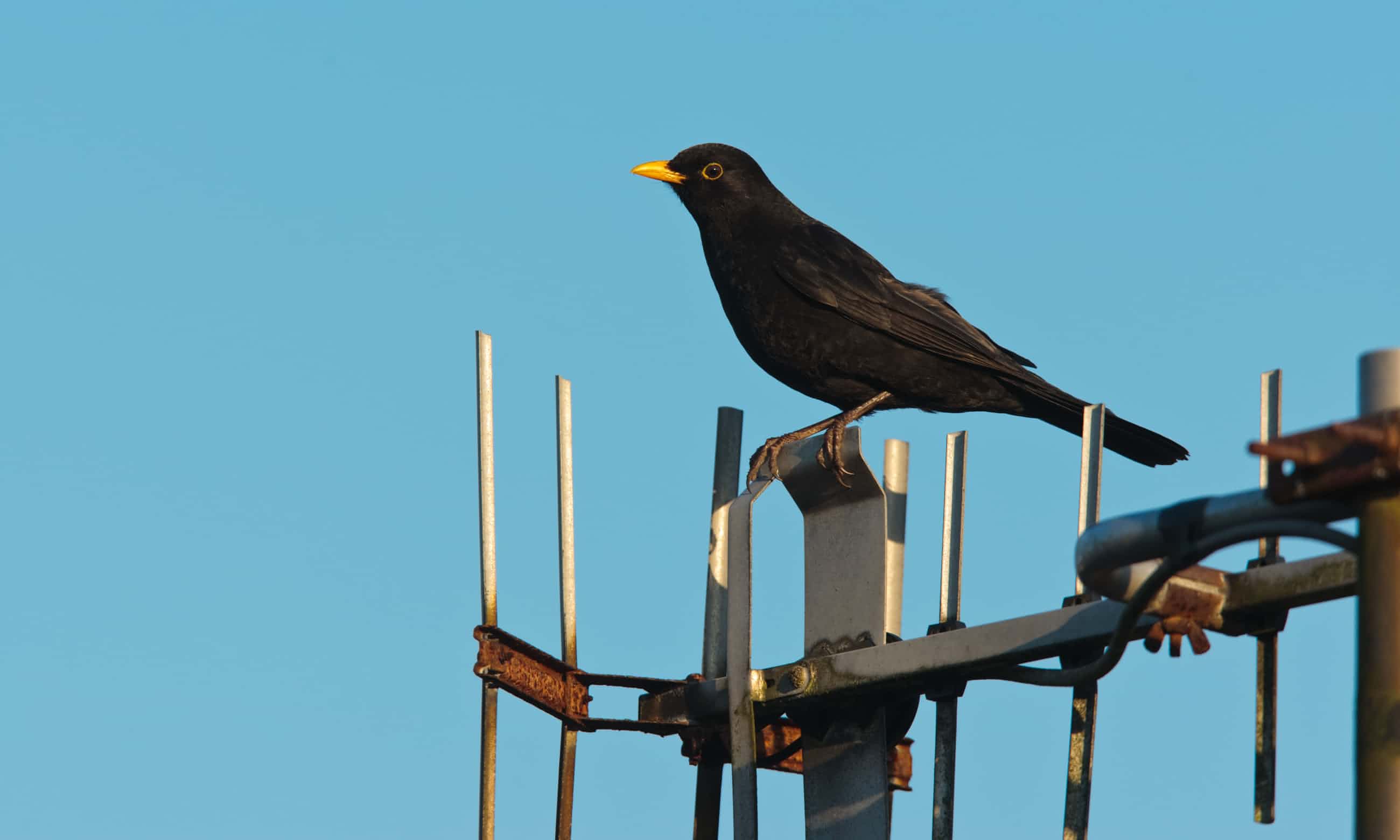From the nut-cracking crows of Sendai to ‘Turdus urbanicus’ (the new urban blackbird), animals are changing their behaviour and evolution in cities – and in dramatic and surprising ways.

On the eve of the Euro 2016 final between France and Portugal, ground staff at the gigantic Stade de France in Paris had left the stadium’s lights on, for security reasons. Attracted by the blinding floodlights, thousands upon thousands of migrating Silver Y moths descended into the empty arena. Those not killed by the heat of the lamps eventually ended up among the grass of the playing surface, where, after the lights were turned off, they hid throughout the day of the big match.
As evening fell, 80,000 spectators took their seats and the lights were turned back on. The sleeping moths stirred, and soon thousands were zigzagging among the players. Photographs taken that night show annoyed football officials picking moths off each other’s suits, while the swarm blocked the lenses of TV cameras and hung from the goalposts. Perhaps the highlight came when Cristiano Ronaldo sat injured and weeping on the pitch, while a lone Silver Y sipped his teardrops away.

As the Portuguese superstar had discovered, the mingling of urban development with the natural world can throw up some weird and wonderful occurrences. Cities are like mad scientists, creating their own crazy ecological concoctions by throwing all kinds of native and foreign elements into the urban melting pot, then spicing it up with artificial light, pollution, impervious surfaces and a host of other challenges. Researchers around the globe are documenting how globalisation and urbanisation are changing the behaviour and evolution of animals.
Indeed, evolutionary biologists no longer need to travel to remote places like the Galápagos to discover their holy grail: speciation, the formation of new and distinct species in the course of evolution. The process is going on right in the very cities where they live and work.
From our partners:
The urban melting pot
In tune with their human population, cities have been assembled from immigrants from around the globe. Either intentionally or accidentally, people have been ferrying flora and fauna across the world for as long as they have been trading and travelling.
The ubiquitous Javan myna birds of Singapore first arrived as pets from Indonesia around 1925, sought after at the time as virtuoso impersonators. They now rival the human population in terms of numbers (and noise). The bright-green ring-necked parakeet, originally hailing from India and Africa, has established itself in European cities thanks to the caged-bird trade for much of the 20th century. In London, they feast on seeds of horse chestnut trees brought from Greece.
Releasing 40 parakeets in 1974 “because Brussels could use some more colour”, the owner of a Belgian zoo singlehandedly founded the country’s entire population, now numbering some 30,000 birds.
At the end of the 19th century, drug manufacturer Eugene Schieffelin decided to bring to the US every bird ever mentioned in the works of Shakespeare. In 1890 and 1891, he shipped 80 breeding pairs of European starlings (Henry IV Part 1) from England and released them in New York’s Central Park. Today, there are about as many starlings as there are people in North America.

Our gardens, balconies and parks are stocked with plants from all over the world, which then provide food for a motley crew of animals from all continents. In Malaysian cities, European rock pigeons are ripping out the flower buds of Chinese hibiscus bushes planted along the pavements. In Perth, the Indian northern palm squirrel was released in 1898 and since then has maintained a healthy population thanks to the abundant fruits of African date palms and other exotic palm trees in the city. The urban loom weaves food webs from weft and warp that are thrown together by chance, linking species in new and exciting patterns.
Places where human activity reaches fever pitch abound with exotic species. These urban ecosystems are formed not by ages of evolution or the slow colonisation by species under their own steam and of their own choice, but by human diligence alone. And that human urbanisation has had a sometimes surprising impact on the behaviour of animals.
The nut-cracking crows of Sendai
In the Japanese city of Sendai, the local carrion crows famously discovered how to use passing traffic as a nutcracker, dropping nuts among the wheels of slow-driving cars and picking up the flesh after the car had passed. For nearly a century in the UK, the milk bottle top-opening skills of tits – lively songbirds with a handsome pattern of yellow, black, and blue and olive-green – have been astounding and annoying city dwellers. Indeed, when manufacturers eventually introduced metal caps, the birds simply learned to hammer a hole in and then pull away the foil in strips.
In Vienna, spiders have been observed to ignore their natural preference for the dark in favour of weaving their webs on sections of a bridge lit with fluorescent tubes. The spiders in the artificially lit “habitat” caught up to four times more prey in their webs than the ones that stayed in the dark. And when ornithologists in Mexico discovered an abundance of cigarette butts in the nests of house sparrows and finches, they were unsure why. Was it simply because the butts made the nests more comfy, or could the birds have noticed that nicotine – an anti-insect agent – could help to keep mites, fleas and lice at bay?
The impact of cities is not just evident in the behaviour of animals – urbanisation has also changed the course of animal evolution.

Researchers in the US found that the wingspan of American cliff swallows, which took up the habit of colonising concrete highway bridges in the 1980s, had decreased by about two millimetres a decade since then. Not much, and perhaps not really worth noticing if their measurements on the roadkill had not shown the exact opposite pattern: by the 2010s, the wings of dead birds by the roadside were about half a centimetre longer than those of live birds still happily flapping along. Also, even though the pressure of traffic had remained the same or even increased, the numbers of dead birds declined by almost 90%.
The shape of a bird’s wing is not something that evolution can mess with with impunity. It is very closely wedded to a bird’s way of life. Long pointed wings are better for fast flying in a straight line, while short rounded wings are good for making rapid turns or for quickly taking off.
The conclusion was inescapable: only cliff swallows with wings short enough to take off vertically from the tarmac to escape an oncoming car had managed to get away and spread their short-wing genes in the gene pool. The tardier long-winged ones ended up as ex-swallows on the hard shoulder, their long-wing genes excluded from the pool. And, as the surviving swallows became ever better adapted at evading approaching vehicles, the number of casualties plummeted.
When researchers consulted the bird collections of eight natural history museums in North America and took measurements on the shape of the wings of 312 starlings, they discovered something interesting. The starlings’ wings had gradually become more rounded over time, because the secondary flight feathers (at the bird’s “lower arm”, closest to the body) had become elongated by some 4%.
It is precisely this quick-response benefit of more rounded wings that may be one of the reasons that the settler starlings evolved. In those 120 years since Schieffelin had released the starlings’ founding fathers in Central Park, the human population in western North America (the part of the continent that the starling expanded into) grew almost fifty-fold. What had been tiny settlements when the starling arrived blossomed into metropolises in a matter of decades. And with urbanisation came new dangers for urban birds: cats and cars. It is quite likely that this is what caused the American starlings to evolve a wing shape that helped them get out of the way of a pouncing cat or a speeding motorcar hurtling towards them.
Cities have even begun to form new species, and for evidence we need look no further than Turdus merula, the blackbird – one of the world’s oldest and best studied urban animals.
Turdus urbanicus

First, blackbirds began wintering in the city. Then, sometimes only many decades later, a few winter visitors stuck around for spring and eventually took up breeding with one another, gave up migration altogether and turned into resident city-birds, abandoning the forest.
That’s about as much as one can glean from field guides and birders’ reports. To really get a feel for what makes the new urban blackbird different from its ancestral forest blackbird, we have to look at the work that an entire cottage industry of urban blackbird researchers has been doing over the past 20 years. In almost every European country, a team of biologists has stepped up and jointly built a veritable urban evolution fest around this one bird species. All this research seems to point in one direction: that the urban blackbird is evolving into a separate species, a case of true speciation.
Across Europe and North Africa, city blackbirds have been found to have shorter, stubbier bills than forest blackbirds, presumably thanks to the easy pickings at bird feeders and other places in the cities where food can be had without pecking, probing or pincering. Whether it’s due to those different beaks is not sure yet, but urban blackbirds sound different too. The urban background noise forces the blackbird songsters to change their pitch and timing.
As researchers in the Netherlands found out after recording almost 3,000 songs, urban blackbird concerts are performed at a higher pitch than forest ones, while a German research team discovered that, as foretold by Paul McCartney, urban blackbirds are singing in the dead of night. In the city centre of Leipzig, they start a full three hours before sunrise, well before the trams and cars start creating a racket. Forest blackbirds open their beaks only at dawn. They also start breeding earlier in the year than their sylvan relatives, as their biological clocks are advanced by more than a month.
A second reason that the city blackbirds breed earlier is that they don’t migrate. They spend the winter in the city, leisurely picking food off feeding tables, and can start breeding when they feel like it. The forest blackbirds on the other hand are, by and large, migratory: to escape the cold and the scarcity of food, they spend the winter in the south and only when they return to their home ground can they begin breeding. By that time, the blackbirds in the city are already smugly ensconced in their nests.
It is important to know that many of the differences were revealed in the laboratory, with forest and city blackbirds that had been reared as chicks under the exact same circumstances. So, they differ by nature (that is, genetically), rather than having learnt different modes of life.
One could argue that over the past centuries, Turdus merula has spawned a new species, Turdus urbanicus, if you will. It’s not quite there yet, but it’s a matter of time for the process to be completed.
The chances are that Turdus urbanicus will be the first in an ever-growing compendium of new species to have evolved in that new, expanding environment: the city. As things stand, cities are still a new phenomenon on Earth, and most urban animals and plants have only begun adapting to them for the past few centuries, millennia at the most. But if we can sustain our urbanised existence into the distant future (a big if), future generations might see the evolution of a unique and truly urban ecosystem.
This article is based on edited excerpts from the book Darwin Comes to Town by Menno Schilthuizen, published by Quercus. Originally appeared in The Guardian.















